Accelerating the pace of heart and lung research and discovery
Thomas Hund, PhD, has a collaborative approach to team science that promises to advance heart and lung research.
It was their latest attempt.
Thomas Hund, PhD, a well-known heart researcher, was ready to rush downstairs to his lab and look through the data.
“Everybody knows that I’m very impatient,” he says to a group of researchers during his weekly lab meeting. “I want to be there to see if we’re wrong again or if we got it right.”
The research, which takes years to complete, is often incremental.
If researchers discover how the heart decodes cellular signals, it means treatment could be developed to offset stress from major heart diseases such as arrhythmia.
The team is focused on a project examining how a cellular channel that carries potassium in heart cells responds to stress.
“Ultimately, we’re targeting something up or downstream from that electrical signal in hopes that we can tune the heart’s response to improve performance,” Dr. Hund says.
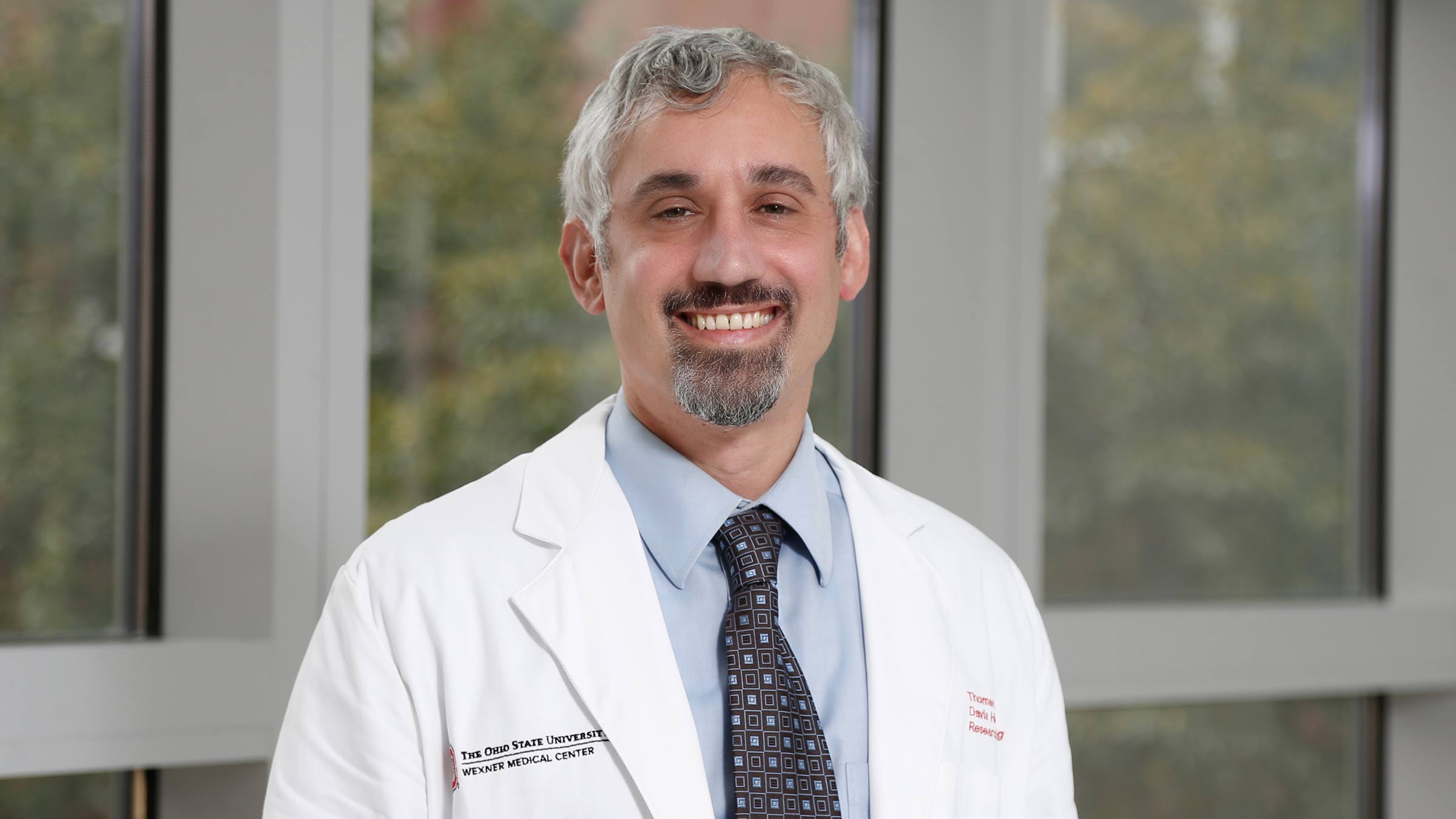
Dr. Hund, a professor in internal medicine and biomedical engineering at The Ohio State University College of Medicine, spent decades studying how electricity powers heart cells with every beat.
Now he spends most of his time accelerating the research of others as the director and the William D. and Jacquelyn L. Wells Chair of The Ohio State University Dorothy M. Davis Heart and Lung Research Institute, which has more than 800 faculty, staff and trainees focused on finding new understanding of and treatments for heart and lung diseases.
A uniquely collaborative approach to heart and lung research
A big part of Dr. Hund’s philosophy is removing barriers and making partnerships easier among researchers.
“He listens to all perspectives and gives everyone a seat at the table. You can tell he puts the mission of the institute above himself,” says Kristin Stanford, PhD, associate director of the Ohio State Davis Heart and Lung Research Institute and professor of physiology and cell biology at the Ohio State College of Medicine.
That means having physician-scientists next to engineers next to molecular cell biologists and trauma surgeon-scientists who share a common interest.
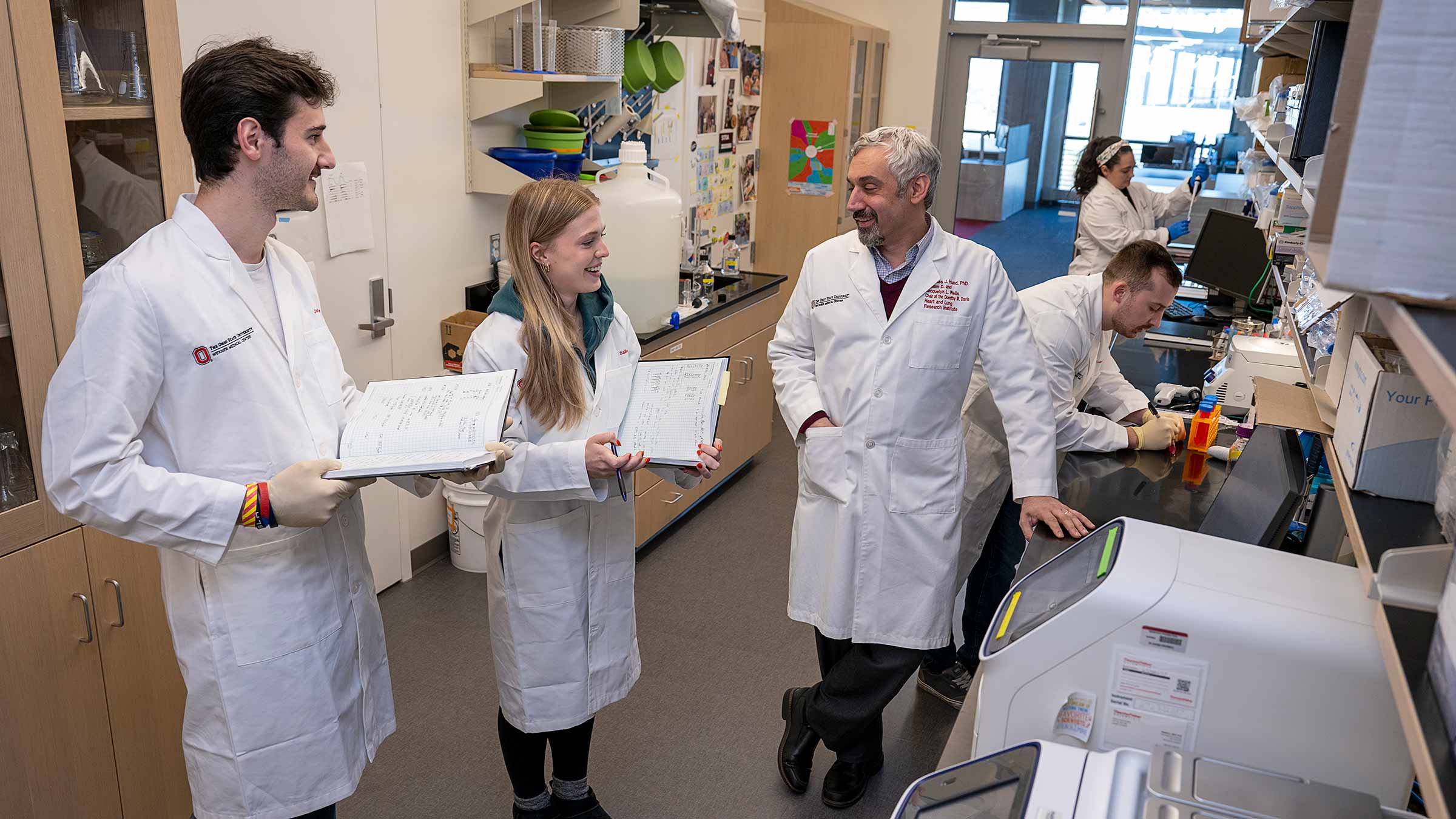
This group of researchers could easily work in their respective specialties and never cross paths. But that’s part of the institute’s genius — taking scientists with diverse skill sets and throwing them together to tackle the same problem from different angles.
“Collaboration is how we’re going to push the frontier and generate breakthroughs that change patient care,” Dr. Hund says.
For that reason, the institute’s research takes place at six locations throughout The Ohio State University Wexner Medical Center campus, occupying more than 225,000 square feet — or about the size of nearly four NFL football fields — of research space.
Building a legacy for giving back
Dr. Hund, who grew up in a household where science was a core value, views health care research as a calling.
“As an undergrad, I really enjoyed the ability to apply math and quantitative analysis to biomedical research. That’s when I first got interested in the heart,” he says. He double majored in physics and bioengineering.
He later pursued a biomedical engineering doctorate at Case Western Reserve University.
“I trained with some leaders in the field of bioelectricity,” Dr. Hund says. “I learned about this whole field that just studies how electrical signals are generated in the body, and how when those signals aren’t generated or don’t spread properly, you get disease and even death.”
He became an expert in developing and solving math equations to create a virtual heart cell on the computer.
“You can get information from the computer that’s really difficult or impossible to get from a real cell,” Dr. Hund says.
Armed with that information, researchers can go back to the lab and actually run experiments based on the modeling.
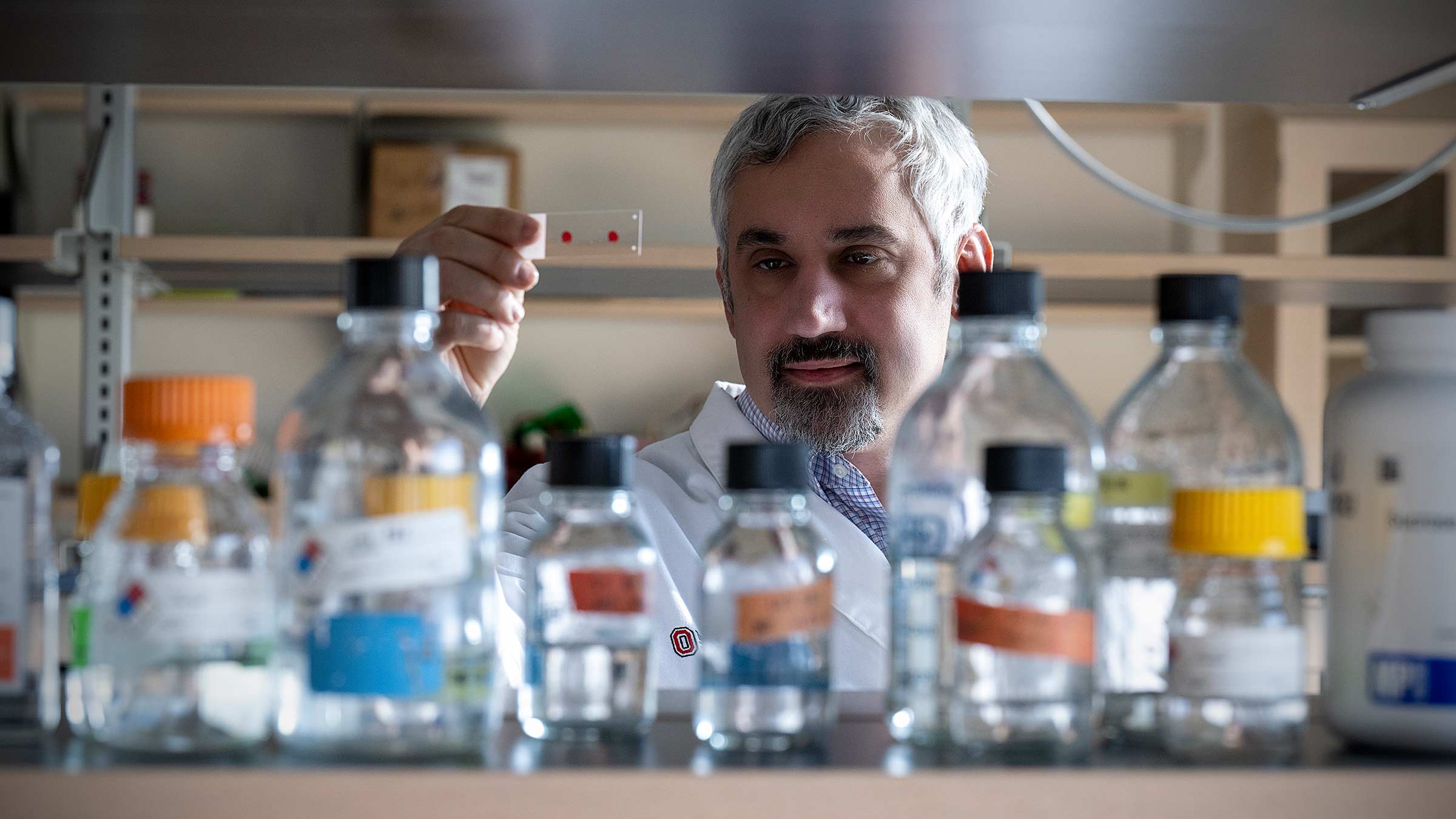
His journey to Ohio State began in 2007 when he was working at University of Iowa alongside another heart researcher, Peter Mohler, PhD.
“Over the next four years, Peter and I, and other scientists in the cardiovascular space, all worked together. It was a great training period,” Dr. Hund says.
Dr. Mohler left Iowa to accept a position as director of the Ohio State Davis Heart and Lung Research Institute. About six months later, Dr. Hund joined Ohio State in a lab adjacent to Dr. Mohler’s.
“Among many other qualities, Tom is extremely smart and also incredibly fun to be around,” says Dr. Mohler, executive vice president for research, innovation and knowledge for The Ohio State University and chief scientific officer of the Ohio State Wexner Medical Center and the College of Medicine.
Dr. Hund is the sixth leader to take the helm at the Ohio State Davis Heart and Lung Research Institute, succeeding Dr. Mohler.
“Most importantly, Dr. Hund loves science and believes in the impact of the work we do each day at Ohio State,” Dr. Mohler says.
Focused on inspiring the next generation of scientists
Much of what Dr. Hund works on is creating a sustainable and vibrant environment for researchers to foster their success. Three of his focus areas include:
- Growing specialty programs. Ohio State already has a strong reputation in several research areas, including advanced imaging, acute lung injury and metabolism. Dr. Hund wants to build on that in areas including prevention and aging, environmental impacts and gene-based medicine.
- Increasing the success rate of researchers obtaining grant funding. The institute’s researchers bring in more than $50 million in grant funding each year, but for young scientists, obtaining funding can be a challenge. The institute has a six-month mentorship program set up to help researchers get their first National Institutes of Health grant. The program pairs researchers with peers and a faculty mentor. The result has been a 90% success rate obtaining grants.
- Creating specialty research and patient care collaborations. The power of bringing research to the bedside is evident in programs like The Bob and Corrine Frick Center for Heart Failure and Arrhythmia, which is a first-of-its-kind center to treat the common intersection of these two diseases. Clinical care is supported by research and clinical trials focused on heart failure and arrhythmia.
“I would like to build an infrastructure that will outlast myself, my successor, their successor,” Dr. Hund says. “We really work to build something that stands on its own and will continue to drive impactful translational research for many years to come.”
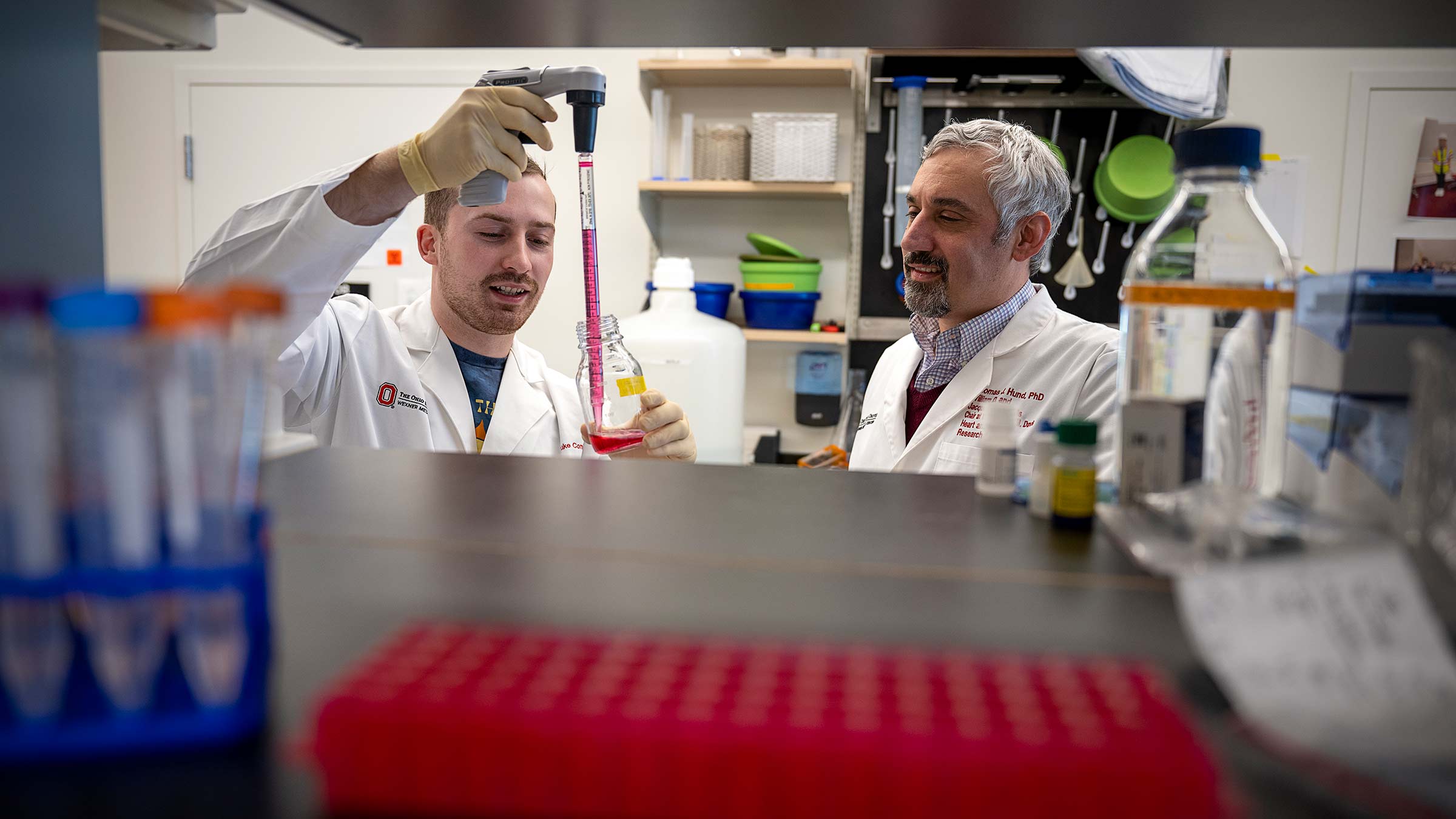
Exploring how heart cells interact under stress
These days, Dr. Hund has largely traded in his lab coat for a suit coat. But during his weekly lab team meeting, Dr. Hund loves hearing about snags and successes happening at the Hund Lab of Excitable Cell Engineering.
“Although I don’t participate directly in experiments anymore, I still find it thrilling to work with the team to come up with a new hypothesis based on the surprising findings and draw up a new set of experiments or computer simulations,” he says.
The research at the Hund lab has centered on how cells signal to each other.
Understanding how billions of heart cells detect and cope with stress could lead to researchers finding ways to prevent electrical disruptions such as cardiac arrests.
Sitting at the table with lab members, Dr. Hund considers the new hypothesis and says, “I could say I feel good about this one. But we do have a plan B, C and D.”
It turns out there was reason to feel good about the outcome of the team’s hypothesis.
The team’s experiment suggested that the potassium channel is needed as a crucial “brake” in response to stress for heart cells.
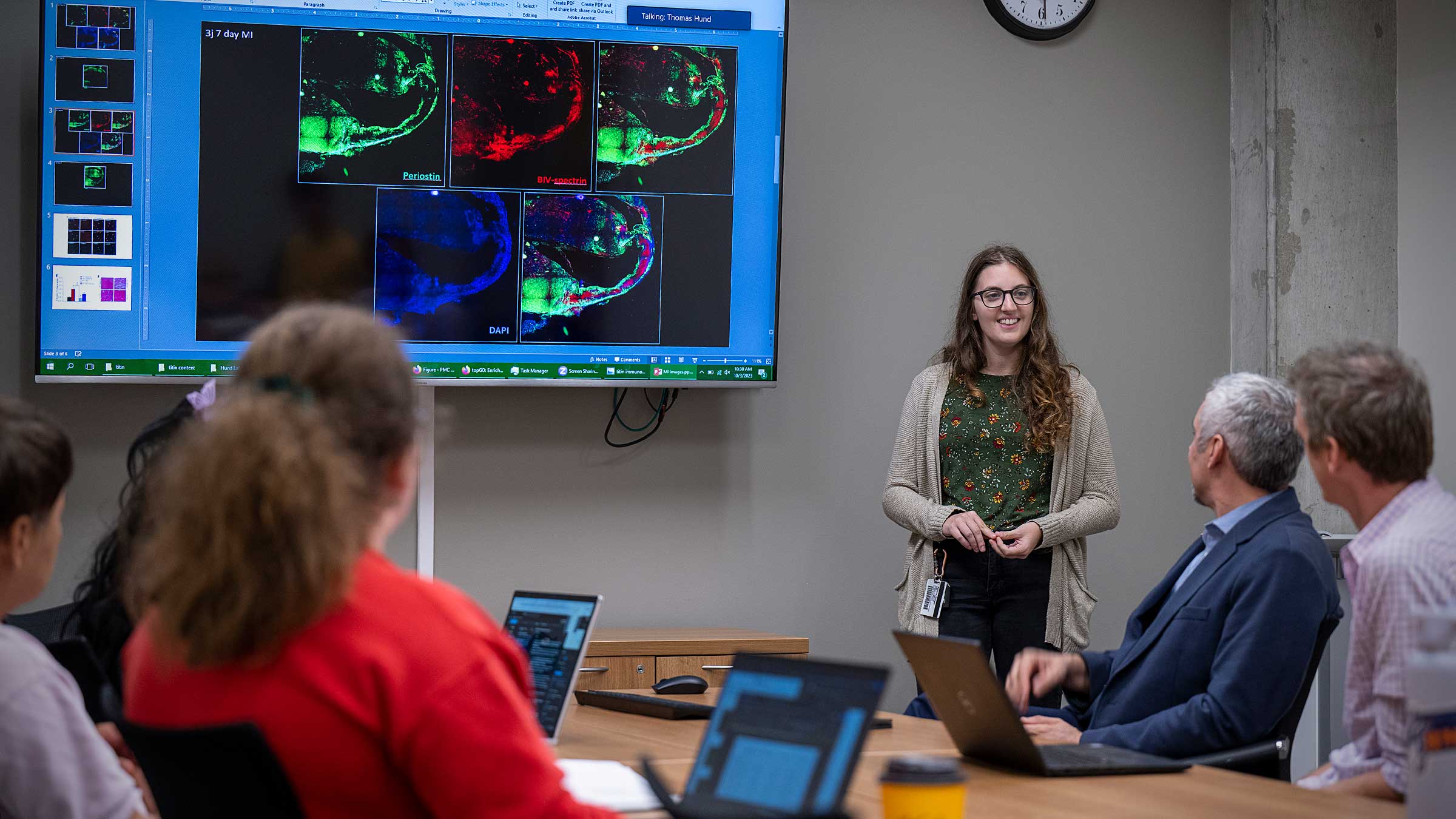
“Without the potassium channel, the brake can no longer be applied,” Dr. Hund says. “The next steps would be to figure out how exactly the brake is constructed so we could design ways to protect it from stress and preserve normal heart function.”
In labs, there are often more setbacks than successes. But each result reveals another path forward.
“Continuing to be involved this way in science helps me in my role as director to stay attuned to the obstacles and opportunities for conducting research at a high level at Ohio State,” Dr. Hund says.
It takes determination, creativity and persistence to continue.
“We’ll keep going,” Dr. Hund says to the group. “We won’t give up.”

Support innovative heart and vascular research that saves lives
Give to support the Dorothy M. Davis Heart and Lung Research Institute
Ways to give



